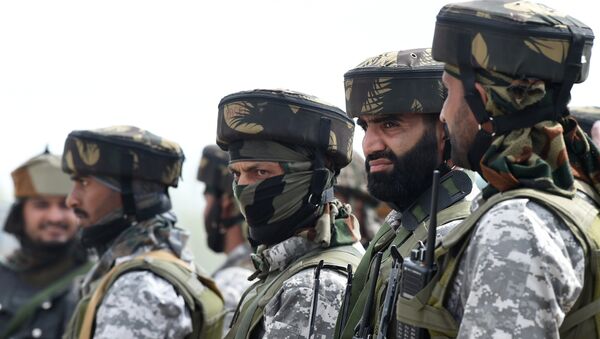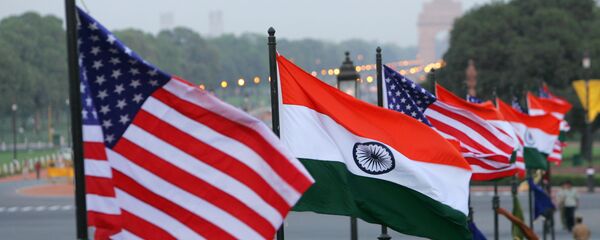Defence and security experts say India’s proximity to the United States could have an impact on the geopolitics of Asia, especially India’s long-term strategic partner Russia, while some others believe it could make China uncompromising on the contentious border dispute with India.
“This will have a very deep impact on the regional geopolitics. It is not Russia alone; Pakistan, China and our entire neighbourhood. This is a huge thing that happened on Tuesday. Let’s not undervalue the importance of this agreement,” says Pravin Sawhney, Editor of FORCE, a magazine which covers defence and security issues.
The Basic Exchange and Cooperation Agreement (BECA) – one of the basic deals the United States signs only with close partners, was the last of the foundational agreements New Delhi signed with Washington on Tuesday, 27 October, at the end of the third 2+2 Ministerial Dialogue. The first deal – the General Security of Military Information Agreement (GSMIA) was signed in 2002, when the late Atal Bihari Vajpayee was Prime Minister of India.
The strategic expert, however, warns that the access to these advanced military system does not come free: in military terms, the US can “potentially” control India's military operations.
“They can control the entire war cycle if they want. So by giving us three force-multipliers, potentially they can control our entire operations,” says Sawhney.
According to Sawhney, through the pact, the United States could ask India to take responsibility on its behalf for the security of sea lanes in the Indian Ocean region. “There is a strategic purpose and a military purpose,” he added.
Sawhney points out that now China could become more uncompromising in the contentious border with India, adding that Beijing “doesn’t get jittered by all these things".
The Chinese foreign ministry on Wednesday once again reiterated that the "Indo-Pacific strategy proposed by the United States trumpets the outdated Cold-War mindset, a confrontation between blocs and geopolitical rivalry".
Nevertheless, Wang Wenbin, a spokesperson for the Chinese foreign ministry, maintained that the China-India boundary issue is between the two countries, and the US should stop "sowing discord between the countries of the region, and undercutting regional peace and stability".
The Sino-Indian border dispute reached an unprecedented scale in the summer of 2020, resulting in a violent faceoff, in which 20 Indian soldiers lost their lives in the Eastern Ladakh region.
Dragon at India's Doorstep for Decades
Agreeing with Sawhney, Professor Bali Ram Deepak of the New Delhi-based Center for Chinese and South East Asian Studies at Jawaharlal Nehru University, says China has never been accommodating as far as its border with India was concerned.
“If you see our relationship in the 1980s or 1990s, even in the first decade of 2000 – during these three decades, though we put our contentious issues on the back-burner, there was no compromise at all (from the Chinese side),” he explains.
Professor Deepak continues by saying that during the three decades, China had narrowed its gap in terms of technological and defence capabilities with the United States, while widening it with India.
“Given these asymmetries, China is becoming more assertive along our border, and China believes that balance of power at least in Asia favours it and there is no need to make any concession to India,” he points out.
The academic, who specialises in Chinese and South East Asian countries, says Beijing is already thinking strategically, considering the possibility of India moving closer to the United States in terms of security cooperation.
India’s Power Equation with the US and Russia
Professor Deepak is sceptical as to whether the latest defence pacts with the United States would tilt New Delhi towards Washington, and believes that the kind of platforms and systems India has procured from the United States so far are limited.
“To give full plate to these foundational agreements, India and the United States really need to transfer technology and a whole lot of these platforms. So at this point in time, it is not enough. I doubt the US would be willing to share these high tech technologies with India instantly,” he says.
Besides, it also remains to be seen if India is willing to open up its facilities for the United States, the professor adds.
“We also have to see New Delhi's commitments and relations with Moscow as Russia would be watching very keenly, like how far we would go to the United States as far as security cooperation is concerned,” suggests the professor.
The US is the second-largest defence exporter to India after Russia. Designated as a major defence partner by Washington, New Delhi has signed arms deals worth over 20 billion since 2008. Despite an increase in arms supply from Washington, Russia remains India's top defence supplier, which is reflected in 86% of the equipment, weapons, and platforms currently in military service in the country. The figure is a whopping 90% if around 10,000 pieces of military hardware are also taken into consideration, as per a paper by the Stimson Centre.





